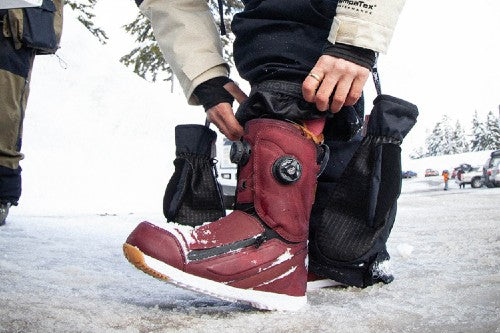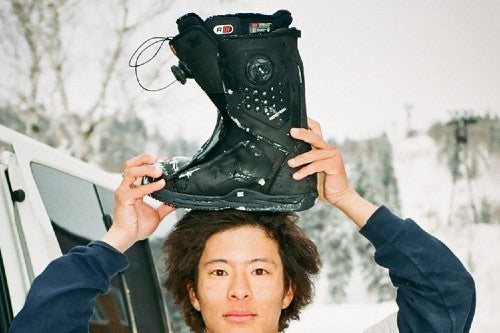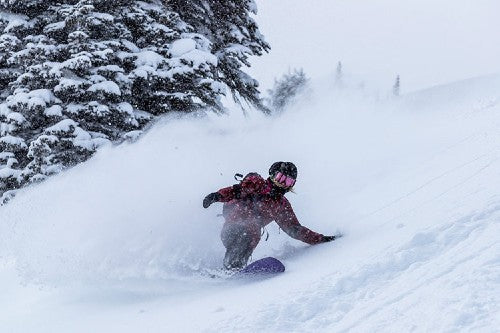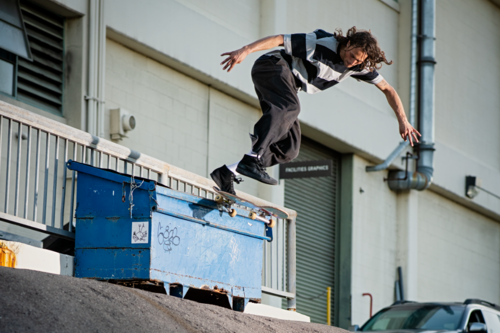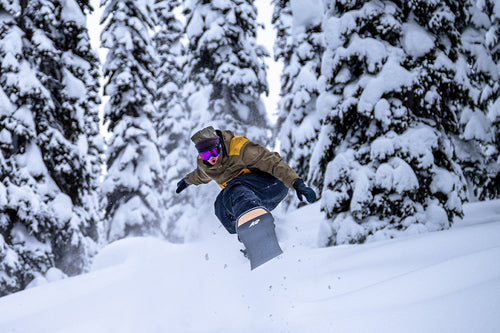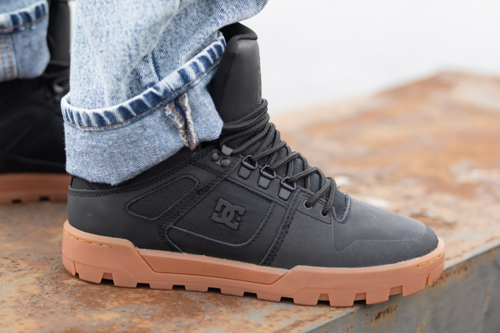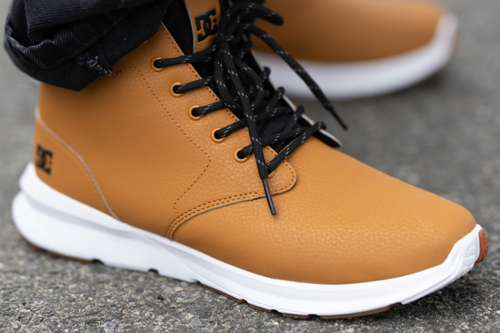TYPES OF WINTER BOOTS
Choosing the right winter boot is vital for staying warm and safe when the temps drop. From casual winter shoes to heavy duty snow boots, this guide will help you be properly equipped for all of your winter activities.
PARTS OF A WINTER BOOT
- Upper – The part of the shoe above the sole that covers the foot.
- Vamp – The front half of the upper, from the arch to the toe.
- Quarter – The back half of the upper, from the arch to the heel.
- Collar – The top edge of the shoe’s heel.
- Tongue – The flexible piece of fabric underneath the laces.
- Lacing system – The pair of laces and reinforced eyelets of D-rings used to tighten shoes and secure them on your feet.
- Gusset – A layer of fabric connecting the tongue to the quarter to prevent water from seeping into the shoe.
- Pull strap – A fabric loop connected to the heel or tongue that makes it easier to get shoes on.
- Toe box – An extra layer of protection added to the front of the shoe to protect the toes.
- Insole – The removable footbed inside the shoe that provides comfort and support.
- Strobel – The layer of fabric attached to the top of the midsole and sits underneath the insole.
- Midsole – Sits below the insole and above the outsole to provide the shoe’s central support and cushioning.
- Outsole – The outermost part of the sole which comes in contact with the ground and provides traction.

WHAT MAKES A WINTER BOOT
Winter boots are footwear that have extra insulation and weather resistant features designed to withstand winter conditions. This includes anything from lightly insulated skate high-tops to heavy duty two-piece snow boots.

THE IMPORTANCE OF INSULATION
Insulation is the most important factor to consider when shopping for winter shoes. If you’re wearing shoes without enough insulation, your entire body could become cold because your feet aren’t warm enough. On the other hand, if you buy boots with too much insulation, your feet could become uncomfortably hot and sweaty. The amount of insulation ideal for you is based on your climates and the activities you’ll be using them for.
Thanks to advancing footwear technology, winter boots are now warmer and lighter than ever.
- Insulations like sherpa or pressed wool help retain foot heat.
- Lined insoles and heat retaining foil strobel boards keep the bottom of your feet warm when walking on freezing cold ground.
- Cushy midsoles and thicker outsoles also create a barrier between your feet and the cold ground.
Most winter boots have a combination of these insulation features to keep your feet warm and comfortable in any climate.
INSULATION RATING
While insulation ratings are not always stated on winter footwear, it is important to know what it means when you come across a numerical rating. Insulation ratings are given in grams ranging from 100 to over 1,000. A light boot can have 200-400 grams of insulation, while a heavier boot can have over 1,200 grams of insulation. You can usually find the rating on the box, but some boots will have the number printed on the outside of the boot.

WATER-RESISTANCE
The water resistance of winter boots isn’t as easily defined as insulation. You’re unlikely to see water or weather resistant ratings on a boot, but you can look out for water resistant materials like Cordura® or GoreTex®.
Most winter boots use naturally water-resistant materials like leather to protect from moisture. Waxed canvas and DWR (durable water repellent) coating are found on many winter boots to provide extra moisture protection.
TYPES OF WINTER BOOTS
WINTERIZED HIKING BOOTS
Winterized hiking boots are designed for hiking through the snow, but they are not the same as mountaineering boots (see below) which are designed for steep, technical, and snowy descents. A good winter hiking boot needs to be light, flexible and comfortable while also providing insulation and traction for winter conditions. Most winter hiking boots will have a mid-top fit that goes above the ankle for stability and warmth while hiking through the snow.
RUBBER OR SLIP-ON BOOTS
Wellington style rain boots are convenient in rainy winter climates where it isn’t too cold. These are easy to slip on and off and provide unmatched waterproofing. That being said, rain boots usually don’t offer that much insulation. If you are dealing with snow on a daily basis, slip-on rain boots might not be warm enough.
Do rain boots work in the snow? They can work okay in the snow, if you wear them with your thickest, warmest socks. But, the rubber upper does very little to block the cold and doesn’t retain heat on the inside of the boot. So, if your rain boots are covered in snow, you’ll certainly feel it in your toes.
WINTER SPORTS SHOES
For certain winter activities, you'll want to have sport-specific shoes.
SHEEPSKIN BOOTS
Sheepskin boots are popular because of their simplicity and warmth. They usually have casual designs without many technical features and are easy to slip on and off. They might be great for running to and from the grocery store, but they aren’t going to keep your feet warm or dry if you’re walking through the snow.

SNOWBOARD BOOTS
Snowboard boots are designed specifically for riding on snowboards while strapped into bindings. Snowboard boots are bulky and stiff in order to protect your feet and ankles, which means you won’t want to wear them very long after riding. For most snowboarders, their boots are the very last thing they put on before heading up the mountain. Most will wear more comfortable snow boots or booties before and after riding.
What’s the difference between snow boots vs. snowboard boots?
Snow boots and snowboard boots are not the same. Snowboard boots are made specifically for riding a snowboard with bindings. Snow boots don’t provide the support or profile to be used with snowboard bindings. Regular snow boots should not be worn for snowboarding.
SKI BOOTS
Ski boots have hard shells and outsoles that are more rigid than snowboard boots. They have removable liners that can be heat-molded to your feet for a proper fit. They are meant to fit snug for more responsiveness on the slopes. As with snowboard boots, most skiers put their boots on just before they head up the mountain and take them off as soon as they’re done skiing.
ALPINE/MOUNTAINEERING BOOTS
Specialized mountaineering (or alpine) boots are designed for hiking up mountains through snowy, icy, and wet conditions. Mountaineering shoes put performance above all else and are often packed with all the latest technical fabrics and features. They have deep tread to provide grip on slippery and icy surfaces. Lightweight mountaineering boots will have minimal insulation and are great for climbing when there’s snow on the ground but the temperatures are moderate. Higher-end mountaineering boots will have extra insulation and gaiters to keep water out.
CASUAL WINTER SHOES
While you might need heavy-duty snow boots or winterized hiking boots on occasion, most people opt for casual winter footwear on a day-to-day basis. You’ll want boots that are both comfortable and stylish and can be worn in a moderate range of temperatures and weather. This is where casual winter shoes come into play. Casual winter boots come in a range of styles and look similar to normal mid or high-top shoes. They often have insulation that doesn’t affect the profile of the shoe. Simple but effective features like gusseted tongues and water-resistant fabrics help keep socks and feet dry when it matters most.
INSULATED BOOTIES
Often made from real or faux sheepskin, insulated booties are great for slipping on as you cruise around the house on a cold day, but you won’t want to wear them outside. Even though some insulated booties have rubber outsoles, the upper offers virtually no water resistance. If the down insulation gets wet, it will no longer keep your feet warm.
WATER-RESISTANT SHOES
When it comes to casual winter shoes, it’s all about keeping your feet dry. If they get a little cold during the short time you are outside, they will warm right up when you get back inside. But if they get wet, it could take hours for them to dry off. A nice high-top shoe with a water-resistant upper (like leather or waxed canvas) is a good option for keeping your feet dry but not too hot on a daily basis.

It’s all about finding the right winter boots (or the combination thereof) to keep your feet warm, dry, and comfortable during all your winter activities. With many options to choose from, you’re sure to find a pair that’s perfect for your needs.
learn more




